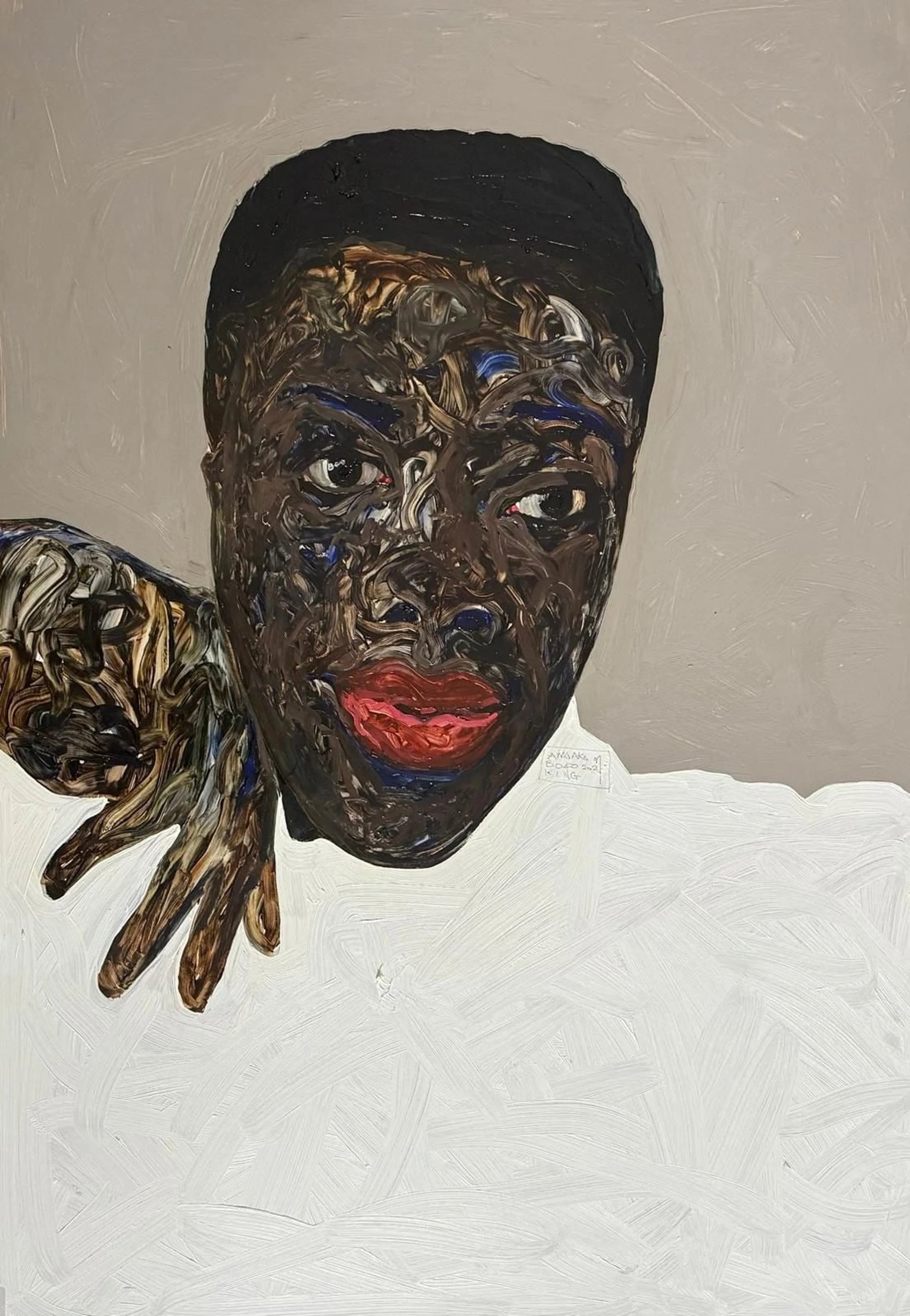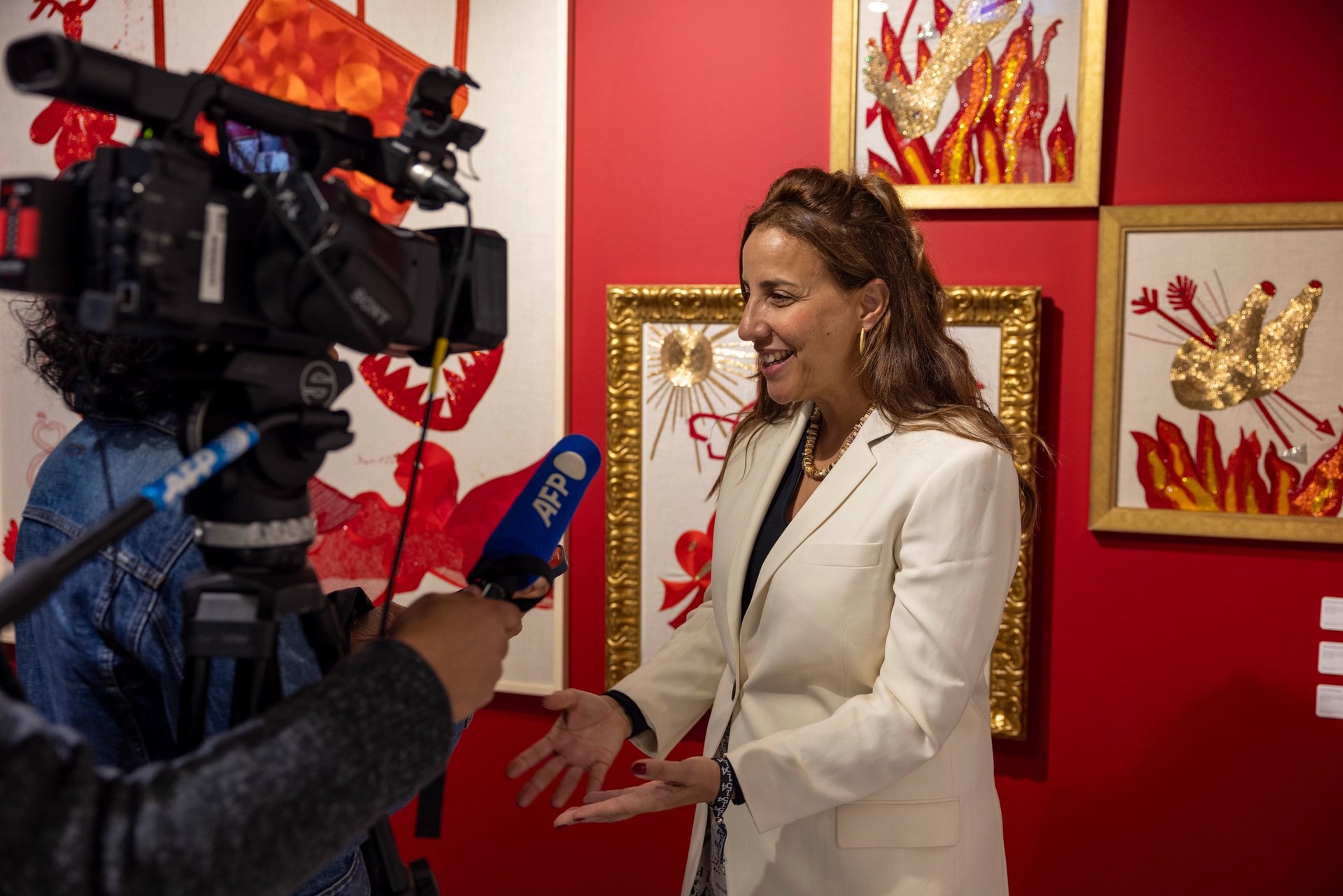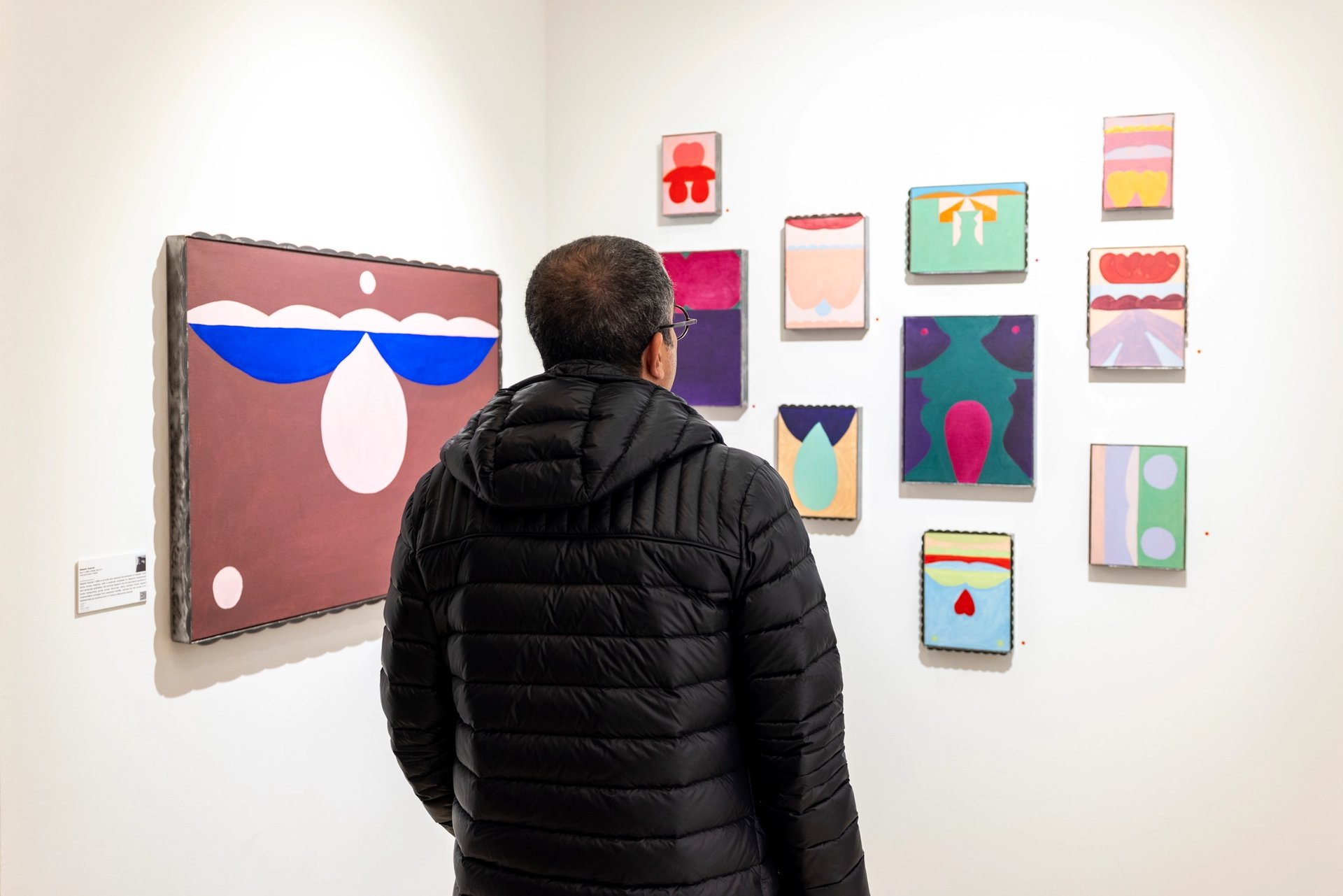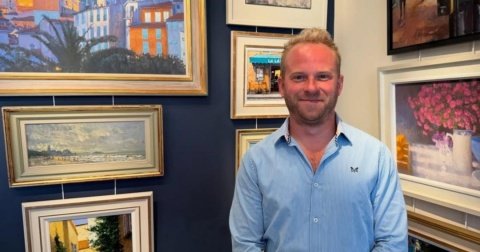For this year’s 1-54 Contemporary African Art fair in Marrakech, 30 galleries from all over the world set up stands at La Mamounia, the palatial luxury hotel on the edge of the city’s chaotic medina, as well as the art events space Dada just off Jemaa el-Fnaa, the main square, which is filled by day with food stalls and performers catering to tourists.
The 1-54 fairs were established by director Touria El Glaoui, born and raised in Morocco—and the daughter of Hassan El Glaoui, one of the country’s most celebrated modern artists—to spotlight work by African artists and the continent’s diaspora. The name is a reference to the 54 countries in Africa. Half of the exhibitors at this edition of 1-54 Marrakech are based on the African continent, a higher rate than is typical at the fair’s larger and longer-running editions in London and New York.
Along with the general soft state of the art market, the trade in works by artists from Africa has taken a hit the past few years. In 2024, auction sales for Modern and contemporary African art fell by 8.4% according to ArtTactic, the art market research firm. However, according to Art Basel and UBS’s report on the art market in 2023—the most recent year with available relevant data—dealers operating in African markets reported “mixed sales” and an overall sales decline of 1%, on par with South America and better than some individual European countries like France and Germany.
“We’ve been very lucky with 1-54 because we’re so specialised and we have a mission. The way people see 1-54 is very different,” El Glaoui says, adding that work at the fair tends to be priced more competitively than at comparable fairs.
Galleries reported strong sales during the first day of the VIP preview on Thursday (30 January). One of the most notable of the fair’s opening day sales was the announcement that the Tate in London had acquired Ghanaian artist Amoako Boafo’s Blank stare (2021) painting from Accra’s Gallery 1957 thanks to the institution’s Africa Acquisitions Committee Catalyst Fund.

Amoako Boafo’s Blank stare (2021) Courtesy of Gallery 1957, ©Amoako Boafo
“So far, so good,” El Glaoui said the morning of the VIP preview. “We have not been too affected by [the slower market], but I’m affected as an intermediary because the galleries do other international art fairs who are suffering. It’s a bit of a situation where we get the ripple effect, because they didn’t have good years in the other fairs.”
Marrakech’s MCC Gallery, taking part in the fair for the first time, reported selling six works priced between €4,000 and €12,000 (the stand features works by the artists Amine El Gotaibi, Mo Baala, Malika Sqalli and Houda Kabbaj). Gallerie 38, also from Marrakech, sold three works, including an untitled 2025 painting by Younes Khourassani for around €13,000. Paris-based Nil Gallery sold two works by Sara Benabdallah for between €3,000 and €6,000 each, and two by Abdellah El Hariri for between €2,000 and €8,000 each. Galerie Farah Fakhri, from Côte d’Ivoire, sold two mixed-media works by Charles-David Gnangoran, also known as Chada: a tapestry Reperes (2025) for €15,000 and Sous le soleil for €9,000. The Paris-based Galerie 208 sold an untitled sculpture by the Moroccan painter Mahi Binebine for €15,000, while The Bridge Gallery, also from Paris, reported selling several works for between €3,700 and €5,000 each (the gallery’s stand features works by Mene Ange Martial and Fadekemi Ogunsanya).
Flourishing galleries in Marrakech and beyond
One break in the clouds of the overcast art market is the growth of art infrastructure in Morocco. More commercial galleries are opening while Moroccan artists are becoming more in-demand at home as well as overseas, dealers say. Moroccan galleries are heavily represented at 1-54 Marrakech, with homegrown galleries making up one-third of the fair’s exhibitors, two more stands than last year.
The first iteration of 1-54 Marrakech was held in 2018, and has been credited with helping to invigorate the city’s art scene. Along with the fair’s stands, this year’s programming incorporates contemporary art all over the city. The fair partnered with galleries in Marrakech’s upscale and modern neighbourhood Guéliz to direct visitors on an art walk of local galleries and museums on Thursday evening, with an unprecedented number of concurrent evening gallery openings in the city, according to the fair’s organisers. El Glaoui says she’s most looking forward to a performance by Marina Abramović protégé Miles Greenberg at the ruins of the 16th-century El Badi Palace, which came together at the last minute.
Galleries and cultural institutions across the city are also putting on their own events and openings to coincide with 1-54. Across Marrakech’s souk in the medina, the old city, the Izza hotel is staging a group show with work by digital artists from the hotel’s own collection along with installations by the Moroccan artists Safaa Erruas, Amina Agueznay and Amina Benbouchta. The Saturday night party at the riad hotel to celebrate Izza’s artist residency is a sendoff for the fair week.
“I’ve always been super surprised that Morocco is not on the top list [of art destinations] just because of the number of residency programmes, auction houses and galleries in every city,” El Glaoui says. “It’s constant in terms of development in each of the big cities of Morocco. You have galleries in Tangiers, you have galleries in Casablanca and Rabat.”
The 1-54 Marrakech fair itself is a major draw for both local collectors and out-of-towners, particularly from France—no surprise given Morocco’s long history as a French colony and the widespread use of the French language in country. Wandering through the aisles at the fair’s two locations, it was more common to hear conversations in French than in Arabic. By Friday morning, more than 900 visitors had entered the fair, organisers said.

Founding director Touria El Glaoui during the VIP opening of 1-54 Marrakech. Courtesy 1-54
One of the Moroccan dealers taking part in the fair for the first time is Abla Ababou, whose eponymous contemporary art gallery is based in Rabat, the country’s capital city. Her gallery often shows works by Moroccan artists because “they don’t necessarily have the same opportunities to exhibit that European artists have”, Ababou says. For its stand at 1-54, the gallery is showcasing four artists who “are at the forefront of the Moroccan art scene”, she says, with works by Noureddine Amir, Hakim Benchekroun, Ilias Selfati and Fatiha Zemmouri priced from €2,000 to €20,000.
“There’s great Moroccan artists in the contemporary scene. We have a lot of young artists now, a lot of Moroccans who go and work [abroad] and now have established their presence that way,” Abaou says. “We’re not that large of a country, but still, you feel this presence.”
Benchekroun, the youngest artist of the group, uses photographs and schematic drawings to contrast the effects of French and Spanish colonisation with their aftermaths. Overlaying images of old structures built by the colonising forces with photos of Moroccan landscapes shows how memory fades with decolonisation, Ababou says.
One of the buzziest stands at the fair is that of Loft Art Gallery, founded in 2009 by sisters Myriem and Yasmine Berrada in cosmopolitan Casablanca, Morocco’s most populous city and home to most of the country’s commercial art galleries. Last year, Loft Art Gallery expanded with a permanent space in Marrakech and took part in Art Basel Paris for the first time.

A visitor views work by Nassim Azarzar at Loft Art Gallery’s stand. Courtesy 1-54
“The Moroccan market has evolved a lot, in a very good way. When I started the gallery 16 years ago, the market was very local,” Yasmine Berrada says. “Everything has changed, and there is a real international openness. It’s very important to put the Moroccan market in the international art scene.”
Like Abla Ababou, Loft Art Gallery’s stand at 1-54 exclusively features works by Moroccan artists to expose them to the fair’s international clientele. The gallery is showing works by Nassim Azarzar, Samy Snoussi, Bouchra Boudoua and Amina Agueznay. Azarzar’s paintings inspired by the views of long Moroccan roadtrips proved particularly popular with attendees, and one sold for €5,800, according to a gallery representative. A painting by the French-born, Casablanca-based painter Snoussi sold for €6,800. A textile hanging by Agueznay sold for €15,000. A piece by Boudoua, who works in ceramic, sold for €8,000.
Increased attention on the Moroccan art market and the work done by commercial galleries and institutions has encouraged collectors to invest in younger artists, Berrada says.
“It was important for me to show new contemporary artists for the first time,” Berrada says. “People are coming from year to year and want to see something new.”
- 1-54 Contemporary African Art fair, Marrakech, until 2 February


